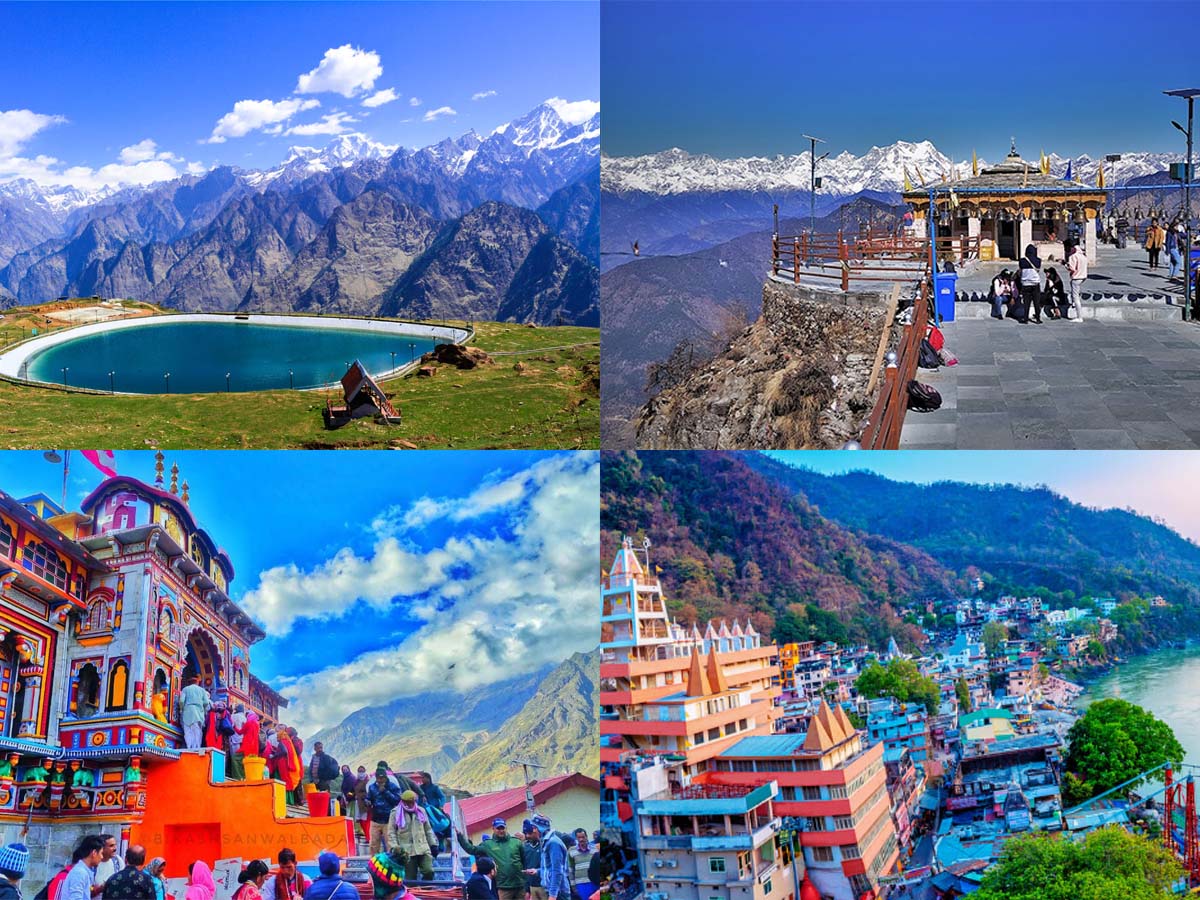
Cultural Heritage
Introduction: A Journey Beyond Faith
The Char Dham Yatra — comprising Yamunotri, Gangotri, Kedarnath, and Badrinath — is one of the most sacred pilgrimages in Hinduism. Situated in the Garhwal Himalayas of Uttarakhand, this spiritual circuit is not only a religious journey but also a reflection of India’s profound cultural heritage. The rituals, architecture, customs, and community involvement in this yatra make it a timeless tradition, passed down for generations.
Yamunotri: Tradition Rooted in Nature
Yamunotri, the source of the Yamuna River, is dedicated to Goddess Yamuna. Pilgrims believe that bathing in its waters ensures freedom from sin and early death. A unique tradition here is cooking rice in the nearby hot spring, Surya Kund, which is offered as prasad to the deity. This practice highlights how the natural environment is interwoven with spiritual customs. The temple’s architecture reflects the simplicity and grace of local Garhwali style.
Gangotri: The Cultural Flow of the Ganges
Gangotri, the origin of the sacred Ganga, is deeply connected with ancient mythology and cultural practices. According to legend, Goddess Ganga descended to Earth to purify the souls of King Bhagirath’s ancestors. Daily aartis at the temple, Vedic hymns, and offerings by the river are all part of timeless traditions. The local communities celebrate Ganga Dussehra with traditional music, regional dances, and decorated processions, reflecting their cultural devotion.
Kedarnath: Legacy of Lord Shiva
Kedarnath, one of the twelve Jyotirlingas, is dedicated to Lord Shiva. Reaching the shrine requires a long and difficult trek, symbolizing spiritual endurance and penance. The temple’s stone architecture, believed to be over a thousand years old, stands as a marvel of ancient craftsmanship. Rituals such as Rudrabhishek, and the echo of Sanskrit chants, preserve the cultural essence of Shaivism. Festivals like Maha Shivratri are celebrated with community involvement and age-old customs.
Badrinath: Syncretism of Beliefs
Badrinath, devoted to Lord Vishnu, showcases a harmonious blend of Shaivite and Vaishnavite traditions. The temple’s idol, made of black stone, is believed to be installed by Adi Shankaracharya in the 8th century. Traditional rituals such as the Tapt Kund bath before darshan and the evening aarti bring pilgrims together in devotion. Badri-Kedar Utsav, held annually, showcases regional arts, music, and dance, promoting the rich cultural vibrancy of Uttarakhand.
Living Traditions and Festivals
Char Dham is not only a spiritual path but a celebration of living traditions. The yatra season is marked by various festivals like Akshaya Tritiya and Janmashtami, which involve vibrant local participation. Folk music, traditional costumes, temple decorations, and food offerings keep the cultural spirit alive. These festivals strengthen the bond between community, spirituality, and heritage.
Conclusion: A Heritage Preserved in Prayer
The Char Dham Yatra is a journey through the heart of India’s spiritual and cultural identity. From ancient rituals to Himalayan architecture, from folk traditions to divine legends — it is a living testimony of timeless traditions. The yatra not only guides pilgrims toward moksha but also immerses them in a heritage that continues to inspire devotion and cultural pride.
Cultural Heritage and Timeless Traditions of the Char Dham Yatra
The Char Dham Yatra, encompassing the sacred shrines of Yamunotri, Gangotri, Kedarnath, and Badrinath, is one of the most revered spiritual journeys in India. Nestled in the Garhwal Himalayas of Uttarakhand, these four destinations are not only religiously significant but are also steeped in deep cultural heritage and timeless traditions that have been passed down for centuries.
The Yatra is much more than a pilgrimage — it is a cultural tapestry woven with spiritual rituals, mythological legends, folk customs, traditional architecture,
Yamunotri
Yamunotri, the origin of the Yamuna River, is associated with the goddess Yamuna, believed to be the daughter of Surya (the Sun God) and the sister of Yama (the God of Death). Pilgrims offer prayers here to seek protection from untimely death and sins. The tradition of cooking rice in the natural hot springs near the Yamunotri temple, which is then offered as prasad, is a significant ritual that reflects the bond between nature and spiritual belief.
Gangotri
Gangotri, the source of the holy Ganges, honors Goddess Ganga who descended to Earth to cleanse the sins of mankind. The temple here, built in classic Himalayan stone architecture, hosts rituals like Ganga Aarti which carry immense cultural resonance. Devotees believe that taking a dip in the icy waters purifies the soul. The surrounding villages also reflect ancient customs and folklore connected to the river and its spiritual symbolism.
kedarnath
Kedarnath, dedicated to Lord Shiva, is one of the twelve Jyotirlingas and is associated with deep mythology from the Mahabharata. Pilgrims trek through rugged terrains to reach the temple, echoing the age-old tradition of tapasya (austerity) and devotion. The architecture of Kedarnath Temple — built from massive stone slabs — is a testament to ancient construction skills that have withstood the tests of time and nature. Rituals like Rudrabhishek and chanting of Vedic mantras in the temple premises carry a strong spiritual and cultural legacy.
Badrinath
Badrinath, the abode of Lord Vishnu in his form as Badrinarayan, is part of the larger Vishnu-centric worship in India. The traditions here blend Shaivism and Vaishnavism, illustrating the syncretic nature of Indian spiritual culture. The temple’s black stone idol of Vishnu, believed to be installed by Adi Shankaracharya, has immense cultural significance. Pilgrims follow practices such as the Tapt Kund bath before darshan, which symbolize spiritual cleansing.
Festivals like Akshaya Tritiya, Ganga Dussehra, and Badri-Kedar Utsav are celebrated with grand processions, folk music, local dance forms, and rituals that involve the entire community — keeping the cultural spirit alive across generations.
Thus, the Char Dham Yatra is not just a route to divinity, but a living museum of India’s cultural and spiritual ethos. It offers a journey into the heart of tradition, where every step, ritual, and prayer resonates with the voices of the ancients and the values that continue to define India’s spiritual heritage.

